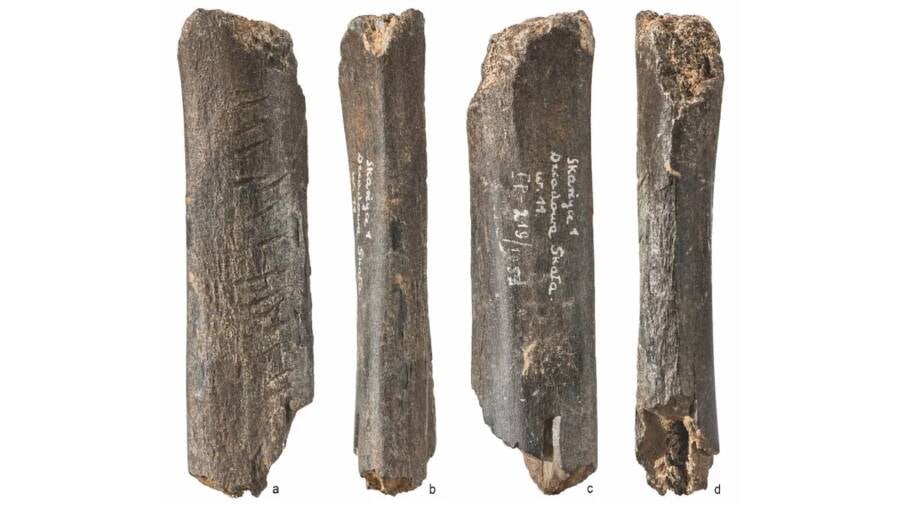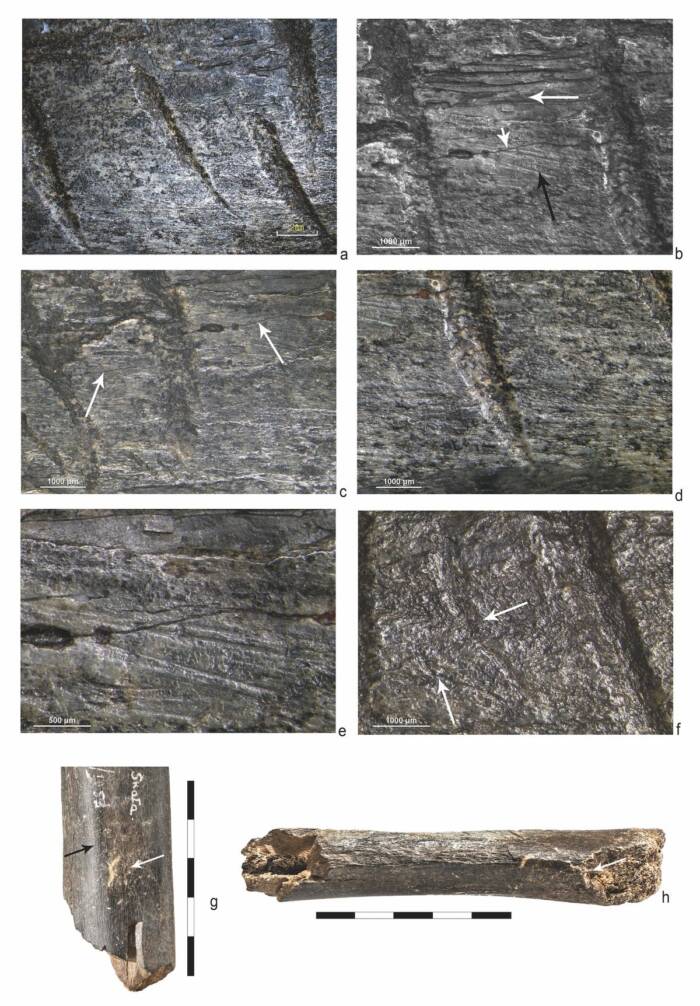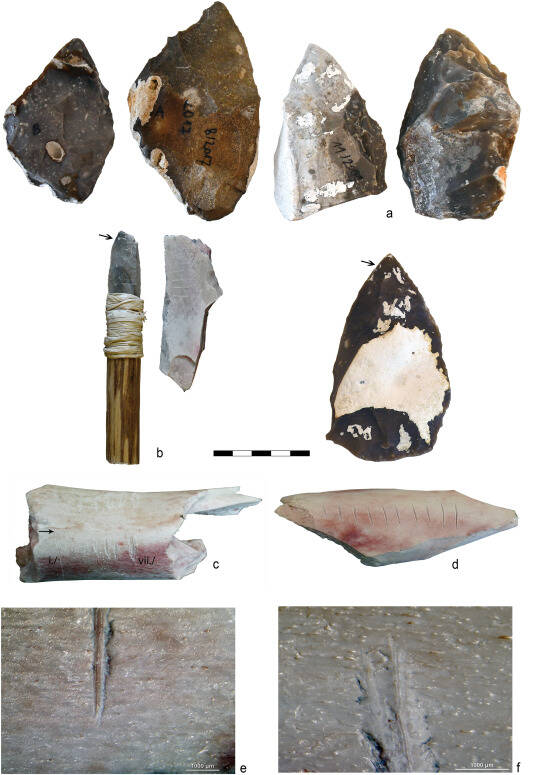Incisions made by Neanderthals on this prehistoric bear bone seem to be deliberate and non-utilitarian, suggesting they are an early example of symbolic art.

T. Gąsior, Płonka et alThe 130,000-year-old bear bone that was carved by Neanderthals.
At first glance, this prehistoric bear bone seems worse for the wear. Etched into its sides are marks that look like cuts, perhaps made by some sort of claw or possibly just damaged over the millennia.
However, a new study suggests these marks may have been deliberately carved into the bone by Neanderthals 130,000 years ago as a form of symbolic art. This would make it one of the oldest art pieces in Eurasia crafted by our extinct cousins.
A Rare Piece Of Neanderthal Art With Symbolism
In a new study published in the Journal of Archaeological Science, researchers closely examined the prehistoric bear bone with a 3D microscope and CT scans to gain a deeper understanding of the nature of the incisions made on the bone.
They found that “the bone was marked using a retouched stone tool, and that the incisions were produced during a single episode by a right-handed individual using repeated unidirectional movements of the tools’ cutting edge.” In other words, it’s clear that the carvings were made intentionally, not as the result of another activity. Nor did the bone itself appear to be a tool — the etchings were made for a purely aesthetic purpose.

T. Gąsior, Płonka et alClose-ups of the incisions made on the bear bone.
As researchers explained in the study, early engraved objects are “pivotal for the study of the origins of symbolic culture and human cognition.” Art, in a sense, is central to human experience. While many animals are known to make “art” as a part of a courtship display — or with human involvement — rarely do non-human animals make art for art’s sake. Creative expression, in this manner, is one of humanity’s defining traits.
The question is: When did humankind start making art?
Why Researchers Are So Fascinated With Neanderthal Art
By examining bones such as this, researchers can begin to unravel long-held questions about the development of human cognition. The consistencies found in the markings on the ancient bear bone suggest that Neanderthals’ cognitive abilities may have been more advanced than previously believed and that prehistoric art was more than just simple doodling.
If these marks, which were seemingly placed systematically, held some deeper symbolism, the implications could be much larger.
To test their theory that the markings were indeed intentional, researchers created a series of experimental cut marks on fresh cattle bones with replica flint blades, using seven different incision techniques. Comparing their own marks to the originals — along with utilizing CT scans — researchers could confidently say that the Neanderthal who made the marks was right-handed and carved the lines by making quick, repeated knife movements toward themself.
What they were trying to convey is difficult to say, though one hypothesis is that they were perhaps recording a numerical message. In either case, all signs point to the incisions being deliberate and non-utilitarian.

T. Gąsior, Płonka et alFlint knives used to create the experimental incisions.
Although the bear bone was originally found in Poland’s Dziadowa Skała Cave in 1953, this is the first detailed analysis that has been performed on it. Based on the findings, it seems like it could be worthwhile to examine other similar prehistoric pieces found at Neanderthal-inhabited sites.
If there is anything to be gathered from this discovery, it’s that Neanderthals were not quite so different from their Homo sapiens cousins, after all.
After learning about the analysis of this ancient bear bone, see our gallery of reconstructed faces of ancient people, from Neanderthals to Jesus. Then, look through these images of ancient erotic art.





